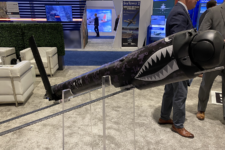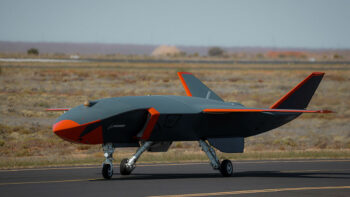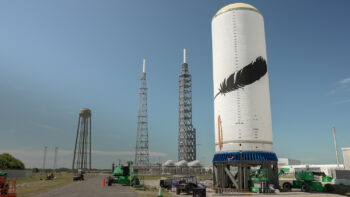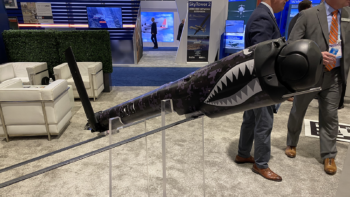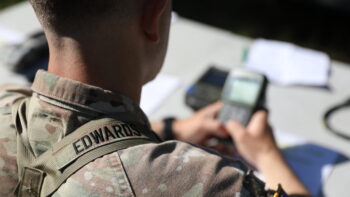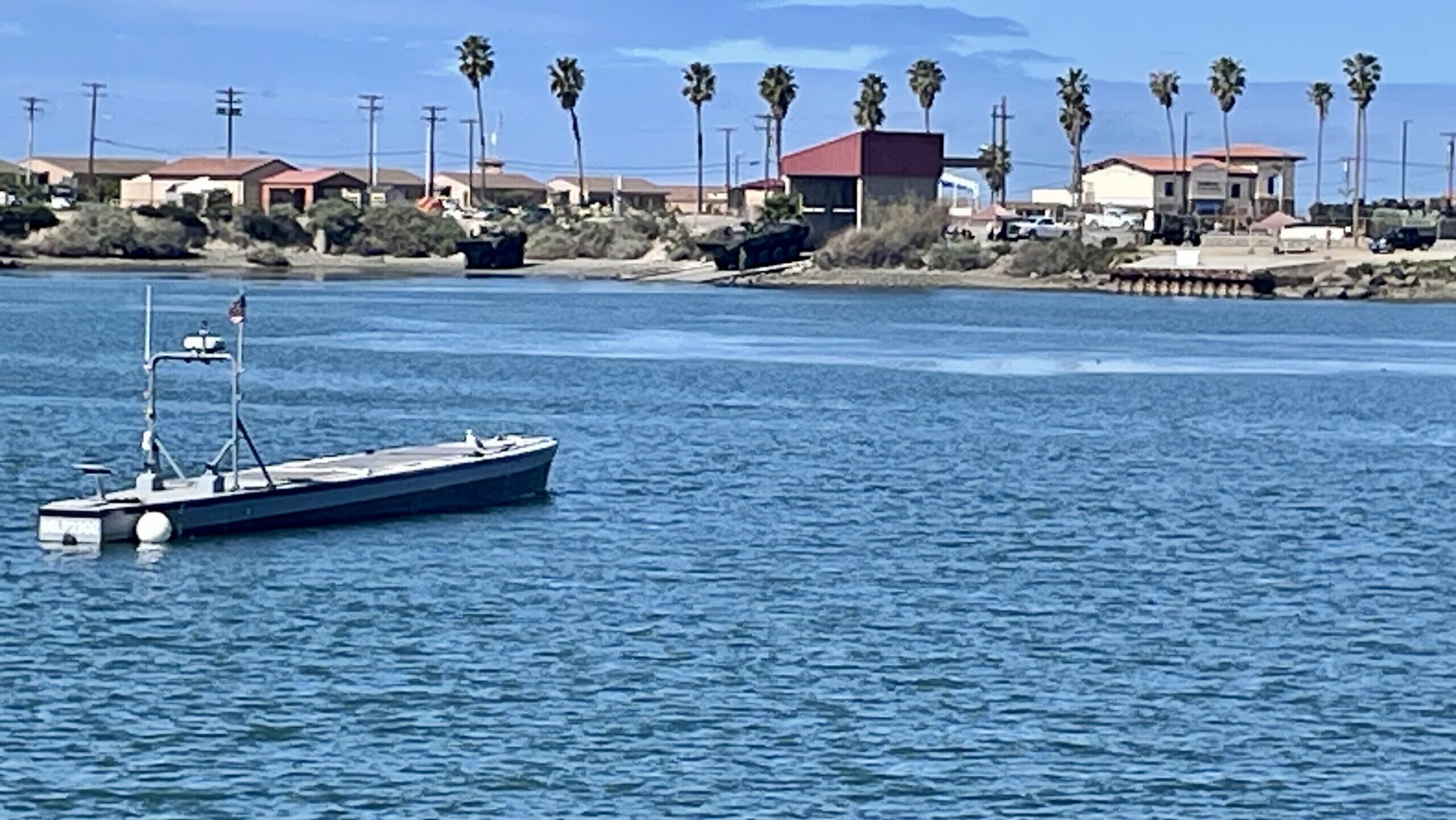
One of the USMC’s Autonomous Low-Profile Vessel concept designs was at the Project Convergence capstone event this year. (Ashley Roque/Breaking Defense)
WASHINGTON — Barracks and facility upgrades top the US Marine Corps $2.4 billion funding wish list for next year, but also included is millions for new watercraft and vehicle programs, and V-22 Osprey “health information.”
After the White House delivered its $849.8 billion discretionary spending request for fiscal 2025 to Congress last week, service chiefs and combatant commanders have begun sending in their required “unfunded priority lists” to lawmakers. Breaking Defense obtained the Marine Corp’s list, and the service said it could use an additional $2.4 billion next year with plans to direct $642 million towards its top three “quality of life” priorities — barracks restoration and modernization, barracks base operating support, and service-wide facility upgrades.
RELATED: Guam defense tops INDOPAC’s unfunded priorities, NORTHCOM wants more IT
An additional $492 million, the USMC adds, could be funneled towards five military construction projects like an aircraft maintenance hangar, in Beaufort, S.C.
But it’s not just military construction and operating cost dollars the service is eyeing. A host of new and existing weapon programs, and force design initiatives are also included on the wish list that total $1.2 billion.
If lawmakers could free up $250 million in the FY25 budget, for example, the service could use that to purchase two additional CH-53K helicopters, or $341 million could be used for the Amphibious Combat Vehicle 30mm Cannon (ACV-30) line.
On the water, the service outlines several initiatives it would like more funding for next year including $6 million for development of its new Autonomous Low-Profile Vessel (ALPV), and $9 million for its Enhanced Combat Rubber Raiding Craft (E-CRRC).
When it comes to munitions, the USMC told lawmakers an additional $90 million for Long Range Anti-Ship Missile (LRASM) C-3 would be ideal, along with $16 million for the Small Diameter Bomb II line.
The service also notes that an additional $90 million would be helpful for V-22 Osprey
“drive system safety and health information.” Following a deadly November 2023 crash, the aircraft was grounded for roughly three months before the Pentagon gave the services, including USMC, the greenlight to return to flight.
“We have high confidence that we understand what component failed, and how it failed. I think what we are still working on is the why and so that is still in the hands of the investigation,” Marine Corps Col. Brian Taylor, the program manager in the Pentagon’s V-22 Joint Program Office, told reporters ahead of the announcement.





